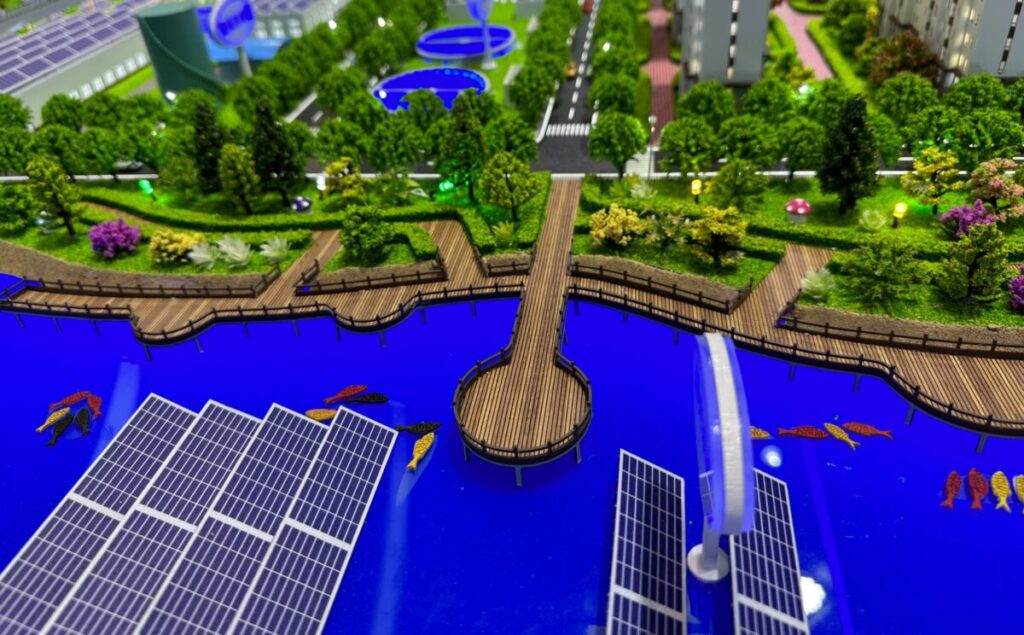Researchers have analyzed the viability of floating PV in terms of net present value, internal rate of return and LCOE. They have involved 25 European countries in their work, including Germany, Great Britain, Spain and Italy.
A group of scientists from Italy and Spain have analyzed the impact of changing economic conditions on the viability of floating PV (FPV) projects in 25 European countries. Namely, they focused on the net present value (NPV), internal rate of return (IRR) and levelized cost of electricity (LCOE) of floating PV installations across the European region. While NPV shows how much profit an investment could generate, IRR shows the expected return, and LCOE calculates the average cost to produce electricity over the life of a project.
“The current work contributes to the development and deployment of FPV by examining the correlations between FPV economic viability and economic variables on an unprecedented scale,” the academics said. “The results of this analysis can inform institutions and potential owners/investors about the economic profitability and cost competitiveness of FPV, taking into account possible variations in key techno-economic factors.”
The study took into account six economic parameters: the average electricity price day ahead for the period 2010-2021; average nominal lending interest rate in 2010-2020; average inflation in 2010-2021; nominal equity IRR in 1900-2010; current corporate tax rates; and the weighted average cost of capital (WACC). Performing a sensitivity analysis, each parameter decreased or increased by 0-50%, in 10% increments, relative to current reference measurements.
The countries analyzed were Albania, Austria, Belgium, Bulgaria, Croatia, Czech Republic, France, Germany, Greece, Hungary, Italy, Lithuania, Netherlands, Poland, Portugal, Romania, Russia, Serbia, Slovakia, Slovenia, Spain and Switzerland, Turkey, Ukraine and the United Kingdom. In all countries the installation was assumed to be a south-facing monofacial FPV system with a 10 degree tilt angle.
The group found that across all countries, capital expenditure (Capex) and WACC have the greatest impact on LCOE. On the other hand, operating and maintenance expenses (Omex), inflation and income tax rates have a lower impact.
“Therefore, in countries where FPV is not yet cost competitive, strategic interventions focused on Capex and WACC are recommended,” the scientists said. “Support mechanisms could, for example, consist of subsidies or direct capital subsidies, aimed at reducing investment expenditure. Alternatively, low-interest, long-term loans could be provided to reduce WACC. In addition, mechanisms such as income tax credits can be used, even though these alone are expected to have a lower impact on the FPV economy compared to the previous ones.”
Furthermore, the results showed that tax rates, inflation rates and Omex have a limited impact on the NPV, while Capex and electricity prices have a more dominant influence. “A 1% variation in capital expenditure could lead to an average increase in NPV of almost €10 ($11.13)/kW. This is particularly important as significant reductions in installation costs can be expected in the future as the FPV market grows and economies of scale materialize,” the researchers said.
As for the IRR, it was found that investment expenditure, electricity price and energy yield have a significant influence on it, while Omex effects, inflation and income tax have less influence. “This means that in countries where FPV is not profitable, support mechanisms such as Feed-in Premiums (FiP), where FPV energy producers receive compensation above the market electricity price, could be introduced,” the academics suggested. “Similar support mechanisms can be applied to increase the NPV of FPV, as this is mainly influenced by Capex, electricity price, energy yield and WACC.”
Their findings were presented in “Impact of variable economic conditions on energy costs and economic viability of floating solar photovoltaics”, published in Heliyon. The research was conducted by academics from Italy’s Sapienza University of Rome and Spain’s University of Jaén.
This content is copyrighted and may not be reused. If you would like to collaborate with us and reuse some of our content, please contact: editors@pv-magazine.com.

